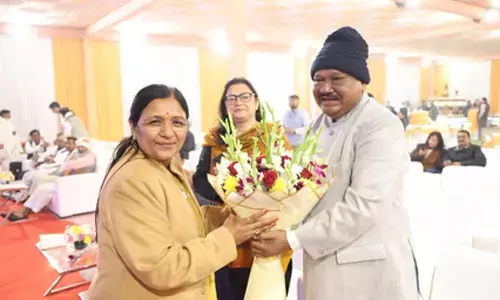Mastering art of the first impression

First impression matters a lot and bagging a positive impression in the first meeting will surely have a lot of positive effects. Here are few tips that will help you in bagging a positive impression.
First impression matters a lot and bagging a positive impression in the first meeting will surely have a lot of positive effects. Here are few tips that will help you in bagging a positive impression.
Let the opp person talk first
Let them take the lead in the conversation, and you can always ask good questions to help this along. Taking the floor right away shows dominance, and that won’t help you build trust. Trust and warmth are created when people feel understood, and they need to be doing a lot of sharing for that to happen.
Positive body language
Becoming cognizant of your gestures, expressions, and tone of voice and making certain they’re positive will draw people to you like ants to a picnic. Using an enthusiastic tone, uncrossing your arms, maintaining eye contact, and leaning towards the speaker are all forms of positive body language, which can make all the difference.
Put away your phone
It’s impossible to build trust and monitor your phone at the same time. Nothing turns people off like a mid-conversation text message or even a quick glance at your phone. When you commit to a conversation, focus all your energy on the conversation. You will find that conversations are more enjoyable and effective when you immerse yourself in them.
Make time for small talk
It might sound trivial, but research shows that starting meetings with just five minutes of small talk gets better results. Many trust builders, such as small talk, can seem a waste of time to people who don’t understand their purpose.
Active listening
Active listening means concentrating on what the other person is saying, rather than planning what you’re going to say next. Asking insightful questions is a great way to illustrate that you’re really paying attention. If you’re not checking for understanding or asking a probing question, you shouldn’t be talking.
Not only does thinking about what you’re going to say next take your attention away from the speaker, hijacking the conversation shows that you think you have something more important to say. This means that you shouldn’t jump in with solutions to the speaker’s problems.
It’s human nature to want to help people, but what a lot of us don’t realize is that when we jump in with advice or a solution, we’re shutting the other person down and destroying trust. It’s essentially a more socially acceptable way of saying, “Okay, I’ve got it. You can stop now!” The effect is the same.
Do homework
People love it when you know things about them that they didn’t have to share. Not creepy stuff, but simple facts that you took the time to learn from their LinkedIn page or company website. While this may not work for chance encounters, it’s crucial when a first meeting is planned ahead of time, such as a job interview or a consultation with a potential client.
Bringing it all together
It’s the little things that make a first impression a good one, and the importance of establishing trust cannot be overstated. Now if someone would just tell this to the politicians!
















